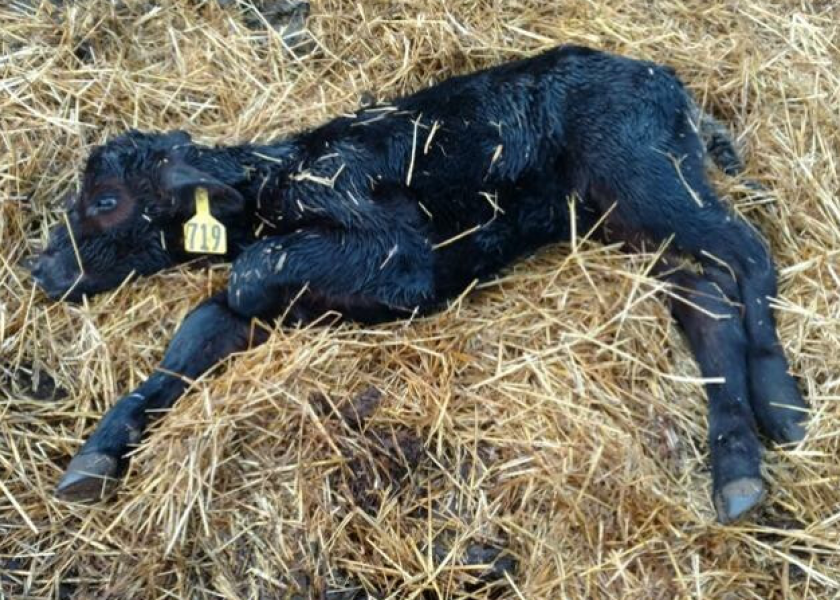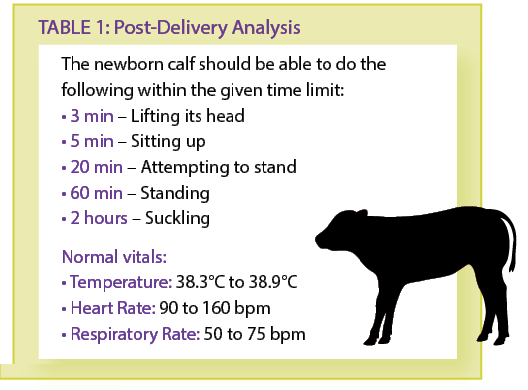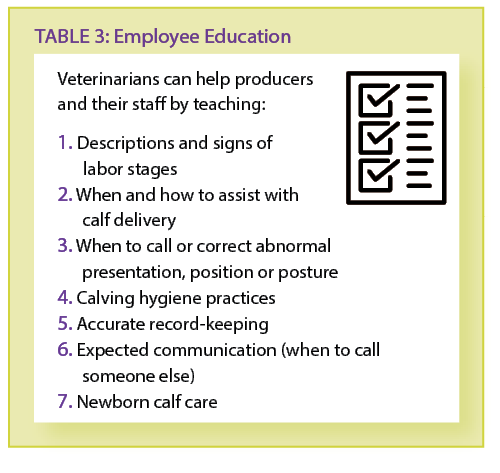9 Tips to Help Resuscitate a Newborn Calf

The first sign of trouble Dr. Andrew Dann saw was the Holstein calf he was pulling was backward. The Attica, N.Y., dairy practitioner says in any dystocia scenario like that he anticipates needing to resuscitate the calf upon arrival.
“Breech calves, oversized calves, backward calves, I’m always thinking they’re probably going to need some help to get going,” he says.
Fortunately, the calf responded well to Dann’s intervention and lived. He estimates more than 50% of the calves he resuscitates do survive, with the overall success rate varying depending upon on the type of calving situation he encounters.
Dann and other bovine veterinarians recently shared some of the practices they routinely use when newborn calves need help at birth.
Here are nine practices for your consideration:
1. ASSESS THE CALF AT DELIVERY. “As a practitioner, one of our jobs is to help educate our clients so they know what’s normal for a calf at delivery and what’s not,” says Dr. Geof Smith, dairy technical services veterinarian for Zoetis. He addressed the topic of resuscitating calves at the 2022 American Association of Bovine Practitioners annual conference.

Calves in distress won’t stand or stand for very long. They won’t nurse well, and will have decreased efficiency in absorbing immunoglobulins.
Other signs of newborn calf stress can include irregular breathing, hemorrhages or red spots in the eye, cyanotic or blue mucous membranes, and a swollen tongue or head.
To better assess calves born during difficult circumstances, a Calf VIGOR Scorer (originally developed by the University of Guelph) is available for iPhone from the University of Wisconsin-Madison at the App Store for $2.99. Smith says the system is similar to an Apgar scoring system used to assess newborn human infants.
2. CLEAR AIR PASSAGES. Check the calf’s nostrils and mouth and remove fluid or mucus using your hand, a suction bulb or even a turkey baster.
“I have one client who has high-dollar embryo calves, and they keep an oxygen tank with a cup mask at the ready when a calf’s born to help it breathe,” Dann says. “They put the mask over the calf’s snout, and it gets a dose of pure oxygen. That has helped tremendously at times.”
If a calf isn’t breathing upon arrival but has a heartbeat, Dann says it is still a good candidate for resuscitation.
3. PUT THE CALF IN STERNAL RECUMBENCY. “Position the calf with their legs underneath them,” Dann advises. “If available, get a couple bales of hay or straw and put one on each side of the calf to prop it into an upright position, so it’s not leaning to one side or the other.”
Don’t leave the calf on its side, which prevents both lungs from inflating uniformly. By getting the animal into an upright position, the calf will be able to expand both lungs more readily as it breathes.
Likewise, don’t hang a calf upside down or over a gate. “These calves have to generate pretty significant negative pressure to expand their alveoli and open up their lungs,” Smith says. “If you want to pick it up for 30 seconds and put it back down, I don’t have a major problem with that. But we definitely don’t need to be hanging these calves upside down for a long time. They cannot expand their lungs when they’re upside down.”
“That can cause too much cranial pressure in the calf’s head and potentially decrease oxygen flow to the brain,” Dann adds.
4. USE A STIMULUS. Dann’s go-to practice is to pour a small amount of cold tap water in one ear.
“That activates neurons and stimulates a calf’s gasp reflex,” he says. “It annoys them, and they’ll shake their head. That’s what you want to see.”
Dann cautions against drenching the calf with water, which can lower its body temperature or even make it more prone to hypothermia.
“I’m using a small amount of water, probably 100 milliliters,” he says.

The use of caffeine is another way Smith says he has seen a stimulant used successfully to help resuscitate calves. “One of the things that caffeine will do is clear adenosine and stimulate respiration,” he says, noting that one caffeine source he sees some dairy farms use is 5-Hour Energy.
5. MECHANICAL VENTILATION OPTIONS. Mechanical ventilation has been shown to effectively ventilate calves in the short-term (Front Vet Science 2018; 5:292). Smith says intubation would be the gold standard but is rarely possible to use in the field. Likewise, he says nose-to-nose or nose-to-mouth are unlikely to be effective.
His recommendation, if you resuscitate calves frequently, is to consider purchasing a resuscitating kit. McCulloch markets one for about $140.
One caution, Smith adds, is sometimes mechanical ventilation will contribute to air winding up in the esophagus and abomasum, and it doesn’t protect the calf trachea.
6. CONSIDER ADMINISTERING MEDICATION. Certain prescription medications such as doxapram may also be used to stimulate respiration, although severely affected calves do not always respond to it.
Smith says minimum data is available but the use of doxapram at 2 mg/kg, IV has a potent stimulating action on the respiratory center. He often recommends it in calves that have severe depression from xylazine (Vet Med Rev 1981; 1:70-74).
Dann often administers a dose of epinephrine, which he says can help open the airway and encourage the calf’s lungs to expand.
7. STIMULATE BLOOD FLOW MANUALLY, IF NECESSARY. Most cows, given the opportunity, will lick and clean their calves upon arrival. You can mimic the dam by using towels to rub and clean the calf.
Sometimes, Dann says he will encounter a beef cow that is disinterested in her offspring. In those situations, Dann says his clients sometimes pour cornmeal across the calf’s back to entice the cow to lick her calf.
8. ADDRESS PAIN CONTROL NEEDS IN THE DAM AND NEWBORN. Dystocia is likely painful for both the cow and her calf. “Calves often have significant muscle bruising, and I believe rib fractures occur more frequently than we might suspect,” Smith says. He references a recent study conducted in Japan that showed approximately 20% of calves born via assisted delivery there had rib fractures (Japan Vet Med Assoc 2021; 74:181-185).
When calves were administered 1 ml of injectable meloxicam, they recovered better after dystocia and gained more weight during the first weeks of life (Bovine Practitioner 2015; 49:1-12).

“I think calving management skills are really critical,” Smith says. “If we as veterinarians work on our skills with resuscitation and try to teach those to our producers, we can really improve calf wellness and vitality in the first few hours and days of life.”
Read More:







